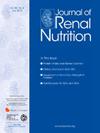评估基于生成式预训练变压器的膳食推荐系统在管理血液透析患者钾摄入量方面的效果。
IF 3.4
3区 医学
Q2 NUTRITION & DIETETICS
引用次数: 0
摘要
目的:尽管进行了充分的透析,但中国血液透析(HD)患者的高钾血症发病率仍然很高。本研究旨在评估由生成式预训练转换器(GPT)驱动的饮食推荐系统在管理血液透析患者血钾水平方面的有效性:方法:我们利用 GPT 技术实施了一个定制的饮食指导工具。从 2023 年 10 月到 2023 年 11 月,在我们中心接受 HD 治疗的患者参与了这项研究。干预包括两个不同的阶段。首先,为患者提供以 HD 钾管理为重点的常规饮食教育。随后,在第二阶段,向他们介绍了一种基于 GPT 的新型饮食指导工具。这种由人工智能(AI)驱动的工具可实时了解各种食物中的钾含量,并提供个性化的饮食建议。我们通过评估其饮食建议的精确度来评估人工智能工具的有效性。此外,我们还比较了透析前血清钾水平和基于 GPT 的饮食指导系统实施前后高钾血症患者的比例:我们对 88 名 HD 患者上传的 324 张食物照片进行了分析,GPTs 系统评估钾含量的总体准确率为 65%。值得注意的是,高钾食物的准确率更高,达到 85%,而低钾食物的准确率仅为 48%。此外,该研究还考察了基于 GPT 的膳食建议对患者血清钾水平的影响,结果显示,与接受传统膳食指导的患者相比,接受 GPT 建议的患者血清钾水平显著降低(4.57 ± 0.76 mmol/L vs. 4.84 ± 0.94 mmol/L,P = .004)。重要的是,与传统的饮食教育相比,基于 GPTs 工具的饮食教育将 HD 患者的高钾血症比例从 39.8% 降至 25% (P = .036):这些结果表明,人工智能在改善血液透析患者的饮食管理方面具有良好的作用。尽管如此,这项研究也指出了提高识别低钾食物准确性的必要性。它为今后的研究铺平了道路,建议纳入广泛的营养数据库并对长期结果进行评估。这样就有可能在 HD 护理中制定出更精细、更有效的饮食管理策略。本文章由计算机程序翻译,如有差异,请以英文原文为准。
Evaluating the Effectiveness of a Generative Pretrained Transformer-Based Dietary Recommendation System in Managing Potassium Intake for Hemodialysis Patients
Objective
Despite adequate dialysis, the prevalence of hyperkalemia in Chinese hemodialysis (HD) patients remains elevated. This study aims to evaluate the effectiveness of a dietary recommendation system driven by generative pretrained transformers (GPTs) in managing potassium levels in HD patients.
Methods
We implemented a bespoke dietary guidance tool utilizing GPT technology. Patients undergoing HD at our center were enrolled in the study from October 2023 to November 2023. The intervention comprised of two distinct phases. Initially, patients were provided with conventional dietary education focused on potassium management in HD. Subsequently, in the second phase, they were introduced to a novel GPT-based dietary guidance tool. This artificial intelligence (AI)-powered tool offered real-time insights into the potassium content of various foods and personalized dietary suggestions. The effectiveness of the AI tool was evaluated by assessing the precision of its dietary recommendations. Additionally, we compared predialysis serum potassium levels and the proportion of patients with hyperkalemia among patients before and after the implementation of the GPT-based dietary guidance system.
Results
In our analysis of 324 food photographs uploaded by 88 HD patients, the GPTs system evaluated potassium content with an overall accuracy of 65%. Notably, the accuracy was higher for high-potassium foods at 85%, while it stood at 48% for low-potassium foods. Furthermore, the study examined the effect of GPT-based dietary advice on patients' serum potassium levels, revealing a significant reduction in those adhering to GPTs recommendations compared to recipients of traditional dietary guidance (4.57 ± 0.76 mmol/L vs. 4.84 ± 0.94 mmol/L, P = .004). Importantly, compared to traditional dietary education, dietary education based on the GPTs tool reduced the proportion of hyperkalemia in HD patients from 39.8% to 25% (P = .036).
Conclusion
These results underscore the promising role of AI in improving dietary management for HD patients. Nonetheless, the study also points out the need for enhanced accuracy in identifying low potassium foods. It paves the way for future research, suggesting the incorporation of extensive nutritional databases and the assessment of long-term outcomes. This could potentially lead to more refined and effective dietary management strategies in HD care.
求助全文
通过发布文献求助,成功后即可免费获取论文全文。
去求助
来源期刊

Journal of Renal Nutrition
医学-泌尿学与肾脏学
CiteScore
5.70
自引率
12.50%
发文量
146
审稿时长
6.7 weeks
期刊介绍:
The Journal of Renal Nutrition is devoted exclusively to renal nutrition science and renal dietetics. Its content is appropriate for nutritionists, physicians and researchers working in nephrology. Each issue contains a state-of-the-art review, original research, articles on the clinical management and education of patients, a current literature review, and nutritional analysis of food products that have clinical relevance.
 求助内容:
求助内容: 应助结果提醒方式:
应助结果提醒方式:


